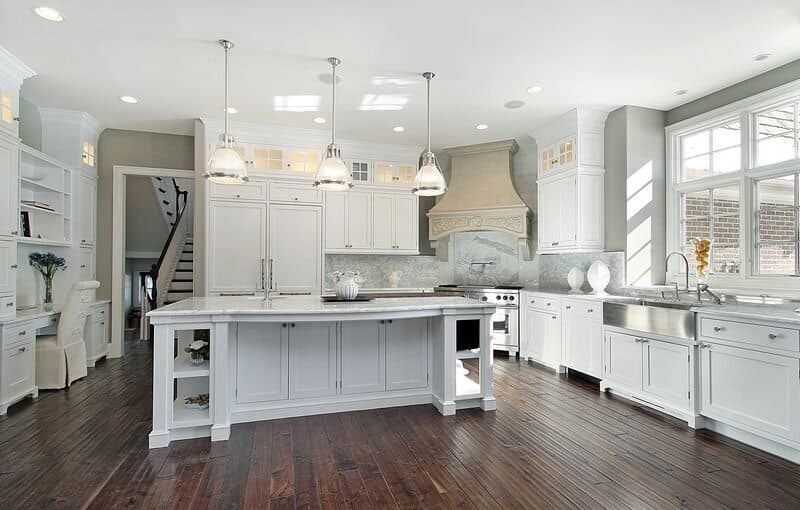Every seller hopes their home will sell quickly, along with a good price. Therefore it may be frustrating whenever your home doesn’t sell, although the house across the street gets snapped up. The homes are in the same location, with similar square footage, and the same amount of bedrooms and bathrooms, so they should sell for the same price as well as in the same amount of time. Right? If you’re in this situation, you may be quick to blame your agent, the possible lack of advertising, the photographs, or the listing description. But the real problem could lie in how you’ve presented your home in the marketplace to the potential buyers.

Sellers: Provide Buyers Whatever They Want
To comprehend the seller experience, let’s look at two different approaches to listing a home.
The story of the house that didn’t sell
Maybe you think you can sell your property without updating it first. Many sellers beging with this perspective, and discover their homes sitting on the market without any activity.
Let’s imagine this seller’s home. They’ve lived there 30 years, raised their family, and now wish to move on. They don’t exactly know where they would like to go after they sell, but they’ll figure that out later.
Herein lies the problem. Without having exit strategy or solid post-sale plan, they can’t possibly be in the position to sell in today’s market. As a result, they reject the pricing or home preparation suggestions of a great local agent, and instead opt for the agent who tells them what they want to hear.
They list the house as-is, to very little buyer activity. The local agents tour the property, and it leaves them with an unfavorable first impression. They aren’t enthusiastic about the house, and therefore comes across to their buyer clients.
All the while, the sheer numbers of days in the marketplace ticks up. Every potential buyer notices this, and thinks there’s something wrong with the house. The seller cycles through two or three agents, and a year later they sell the home for significantly less compared to what they should have. At the same time they’ve paid taxes, mortgage interest, and maintenance costs.
The story of the house that sold
Now let’s look at the home that got purchased at the seller’s desired price. These sellers reached out to their agent well before they planned to move, and indicated that they planned to downsize and move closer to the city.
They didn’t have an exact plan just yet, but wanted to be in contact with agents to comprehend the marketplace, its dynamics, along with what will be required of them to sell successfully.
Working with their agent, they put a six-month plan in position to prepare an estate sale, move their oversized furniture to storage, and then make necessary repairs to the home.
They also invested money in light staging and small cosmetic changes, including painting Suzie’s dark purple room to a more neutral color, and taking down their old window coverings. They traveled down memory lane while they packed up old photos, diplomas, and decorations from the African safari they took as a family A decade ago.
They understood that the home, as they lived in it, isn’t what today’s buyers want. Meanwhile, they’ve explored their next stage of life options and made a decision to rent in the city for a year.
Once they made that decision, they were ready to list. The local agents tour and love the property. The listing gets a great deal of buyer activity, and the sellers have a deal within 30 days, and can proceed to the next phase in their life.
So why do sellers resist?
Selling a family home after many years can be incredibly stressful. A homeowner who hasn’t emotionally detached from their home, as well as their experiences there, can’t possibly be objective. They think they’re prepared to proceed and simply want to be finished with it.
But sellers have to understand that while it’s their home first, it’s also an investment. If a well-intentioned agent says your home isn’t salable in its current condition at your desired price, you could possibly feel insulted – but it’s imperative that you take into account the perspective of today’s buyers.
The buyers are the customers, after all. Imagine entering a shoe store to discover that they don’t sell the latest style of Nike sneakers. If that’s the case, you’d probably leave and look for the store that did, right?
Offer the buyers what they really want
Most buyers would like a turn-key home. They don’t wish to spend a penny on repairs or upgrades, and in addition they don’t have time to do the work. They’ve got busy schedules and demanding jobs. The thought of closing on a home and then hiring an architect, painter or a designer is far more than they can handle. They want a clean, move-in ready home that they’ll show off to their friends on the first day.
Show them a house with gray or white walls, newly finished hardwood floors and lots of white in the kitchen area and bathrooms, and they will jump on it.
Sellers who invest time and money in preparing their house before listing it will eventually sell quicker as well as for more money. And that’s what every seller wants.

